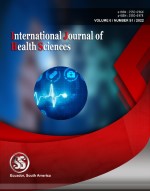Pedestrian safety system with crash prediction
Keywords:
augmentation function, crash prediction, Markov model, pedestrian safetyAbstract
Every year nearly 1.5 million people are dying in traffic collisions around the world, due to the unexpected behavior of pedestrians while crossing the road. To address this problem an augmentation function for predicting the crash risk of the active pedestrian is proposed. The augmentation function has several functions like pre-crash scenario, vehicle trajectory, and pedestrian trajectory. In a Pre-Crash scenario, pedestrian movement such as entering the road boundary or not is detected. The input comes from the sensor which is located at the head of the car. After the pre-crash scenario vehicle trajectory is used to control the speed of the vehicle. Then the Markov IRW model-based pedestrian trajectory finding is used to predict the state of each pedestrian. The states are categorized into three types: Running, Walking and Standing. In this model, the pedestrian types whether the pedestrian is a child or young or old aged people is predicted. And the crash risk is evaluated based on the Monte Carlo algorithm that calculates the minimum detection range for active pedestrians. If the crash risk is exceeded the threshold limit then an augmentation function is activating the evasive action.
Downloads
References
V. Girbes, L. Armesto, J. Dols, and J. Tornero, “Haptic feedback to assistbus drivers for pedestrian safety at low speed,IEEE Trans. Haptics,vol.9,no. 3, pp. 345–357, Jul.–Sep. 2020.
Girbés, L. Armesto, J. Dols, and J. Tornero, “An active safety systemfor low-speed bus braking assistance,”IEEE Trans. Intell. Transp. Syst.,vol. 18, no. 2, pp. 377–387, Feb. 2019.
C.G.Keller,T.Dang,H.Fritz,A.Joos,C.Rabe,andD.M.Gavrila,“Activepedestrian safety by automatic braking and evasive steering,”IEEETrans.Intell. Transp. Syst., vol. 12, no. 4, pp. 1292–1304, Dec. 2011
G.De Nicolao, A. Ferrara, and L. Giacomini, “Onboard sensor-basedcollision risk assessment to improve pedestrians’ safety,”IEEETrans.Veh. Technol., vol. 56, no. 5, pp. 2405–2413, Sep. 2020.
T. S. Combs, L. S. Sandt, M. P. Clamann, and N. C. McDonald, "Automated vehicles and pedestrian safety: exploring the promise and limits of pedestrian detection," American journal of preventive medicine, vol. 56, no. 1, pp. 1-7, 2019
Vision Assistant, https://www.nydailynews.com/autos/street-smarts/tech-talk-audi-night-vision-assistant-article-1.4041439 (accessed July 17, 2018).
F. Schneemann and P. Heinemann, "Context-based detection of pedestrian crossing intention for autonomous driving in urban environments," in 2016 IEEE/RSJ International Conference on Intelligent Robots and Systems (IROS), 2016: IEEE, pp. 2243-2248.
E. Rosén, J.-E. Källhammer, D. Eriksson, M. Nentwich, R. Fredriksson, and K. Smith, "Pedestrian injury mitigation by autonomous braking," Accident Analysis & Prevention, vol. 42, no. 6, pp. 1949-1957, 2020
L. Yue, M. Abdel-Aty, Y. Wu, O. Zheng, and J. Yuan, "In-depth approach for identifying crash causation patterns and its implications for pedestrian crash prevention," Journal of Safety Research, vol. 73, pp. 119-132, 2020.
M. Lindman, A. Ödblom, E. Bergvall, A. Eidehall, B. Svanberg, and T. Lukaszewicz, "Benefit estimation model for pedestrian auto brake functionality," presented at the 4th International Conference on Expert Symposium on Accident Research, Hanover, Germany, 2020
Published
How to Cite
Issue
Section
Copyright (c) 2022 International journal of health sciences

This work is licensed under a Creative Commons Attribution-NonCommercial-NoDerivatives 4.0 International License.
Articles published in the International Journal of Health Sciences (IJHS) are available under Creative Commons Attribution Non-Commercial No Derivatives Licence (CC BY-NC-ND 4.0). Authors retain copyright in their work and grant IJHS right of first publication under CC BY-NC-ND 4.0. Users have the right to read, download, copy, distribute, print, search, or link to the full texts of articles in this journal, and to use them for any other lawful purpose.
Articles published in IJHS can be copied, communicated and shared in their published form for non-commercial purposes provided full attribution is given to the author and the journal. Authors are able to enter into separate, additional contractual arrangements for the non-exclusive distribution of the journal's published version of the work (e.g., post it to an institutional repository or publish it in a book), with an acknowledgment of its initial publication in this journal.
This copyright notice applies to articles published in IJHS volumes 4 onwards. Please read about the copyright notices for previous volumes under Journal History.
















